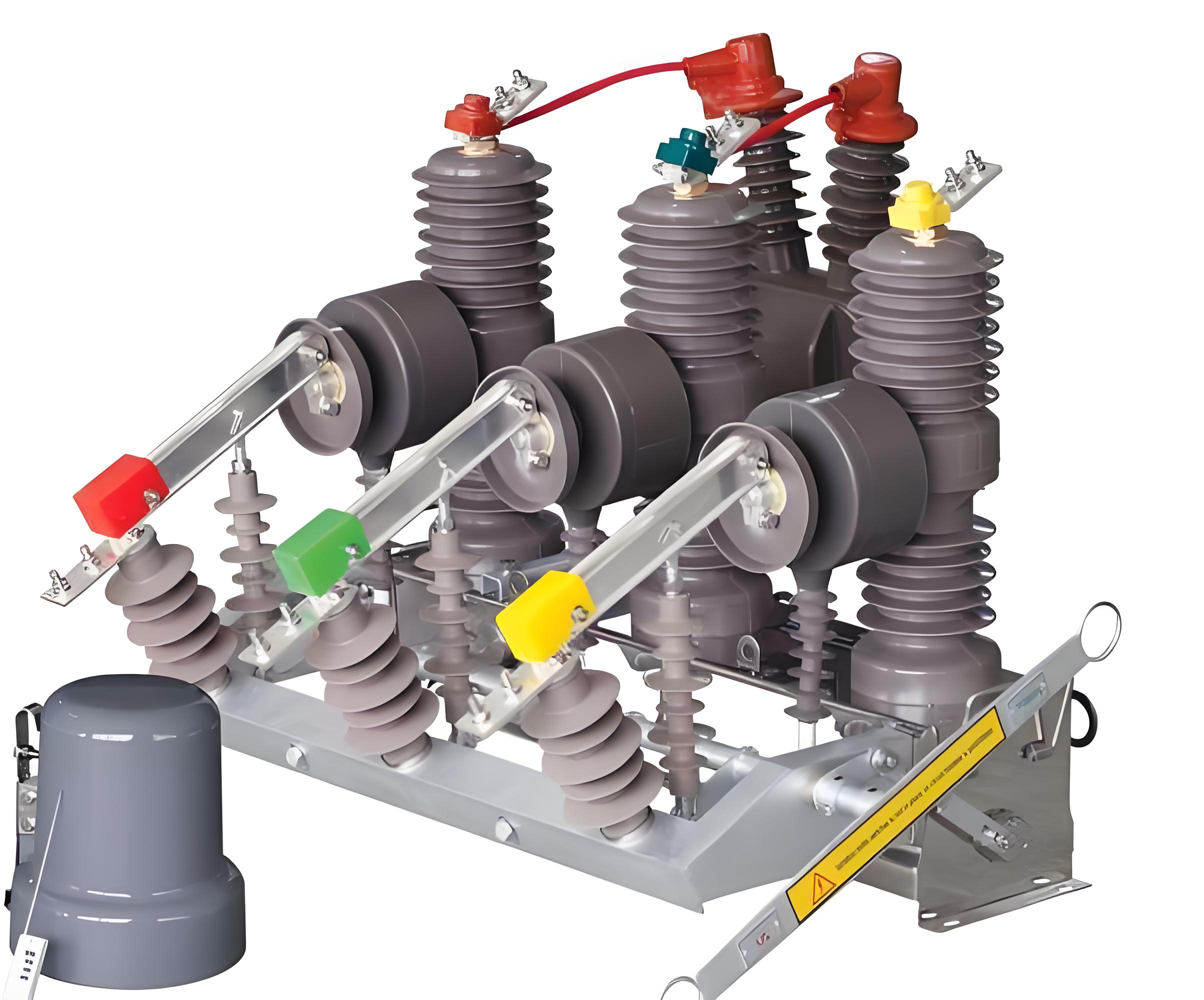A vacuum circuit breaker is one of the most important components in modern electrical power systems. It ensures safe interruption of current flow in high voltage networks, preventing damage to equipment and enhancing system reliability. On Aierway, we explain the essential features, benefits, and applications of the Vacuum circuit breaker, providing a detailed understanding for engineers, technicians, and energy professionals.
Introduction to Vacuum Circuit Breaker Technology
A vacuum circuit breaker uses vacuum as the arc quenching medium. When the contacts separate, the arc is formed within the vacuum chamber, and because there are no gas molecules, the arc extinguishes rapidly. This makes the vacuum circuit breaker highly efficient and reliable for high voltage and medium voltage applications. The development of this technology has revolutionized power distribution and transmission systems across industries.
How a Vacuum Circuit Breaker Works
In a vacuum circuit breaker, the current-carrying contacts are enclosed within a vacuum interrupter. When a fault occurs, the circuit breaker operates, and the contacts separate. The current continues to flow through the arc until it reaches zero. The vacuum immediately extinguishes the arc because the absence of ionized particles prevents further conduction. This quick response makes the vacuum circuit breaker ideal for protecting transformers, switchgear, and substations.
Key Components of a Vacuum Circuit Breaker
A vacuum circuit breaker consists of several essential components that work together to ensure smooth operation. The main parts include:
- Vacuum Interrupter: The core part where the arc interruption occurs.
- Operating Mechanism: Provides the force to open and close the contacts.
- Arc Shield: Prevents metal vapors from condensing on the insulator.
- Insulating Housing: Ensures electrical isolation and mechanical protection.
Each component of the vacuum circuit breaker is designed to withstand high electrical stresses and mechanical wear, making it durable and long-lasting.
Advantages of Using a Vacuum Circuit Breaker
The vacuum circuit breaker offers several advantages over conventional circuit breakers such as oil or air circuit breakers. The main benefits include:
- High Reliability: Vacuum technology ensures consistent performance under various conditions.
- Low Maintenance: The sealed vacuum interrupter eliminates the need for regular maintenance.
- Fast Operation: The arc extinguishes quickly, reducing system downtime.
- Compact Design: The vacuum circuit breaker is smaller and lighter than traditional alternatives.
- Environmentally Friendly: It does not use any harmful gases, ensuring eco-friendly operation.
These features make the vacuum circuit breaker a preferred choice for high voltage applications.
Applications of Vacuum Circuit Breakers
Vacuum circuit breakers are widely used in various industries and power systems due to their versatility and safety. They are commonly installed in:
- Power distribution networks
- Industrial plants
- Mining operations
- Substations
- Renewable energy systems
In each of these applications, the vacuum circuit breaker ensures the protection of valuable electrical equipment from faults and short circuits.
Comparison with Other Circuit Breakers
When comparing the vacuum circuit breaker with oil, air, or SF6 circuit breakers, several distinctions arise. Unlike oil circuit breakers, it does not require any flammable material. Compared to SF6 circuit breakers, the vacuum circuit breaker has no risk of gas leakage or greenhouse emissions. It also provides faster recovery and superior dielectric strength. For this reason, many modern facilities prefer the vacuum circuit breaker for both safety and sustainability.
Design and Construction of a Vacuum Circuit Breaker
The design of a vacuum circuit breaker focuses on reliability and performance. The vacuum interrupter is typically made of ceramic or metal, ensuring a perfect seal. Contacts are made of copper-chromium alloy, offering excellent arc resistance and long life. The operating mechanism may be spring-operated, magnetic, or motor-driven depending on the application. Each design ensures that the vacuum circuit breaker performs efficiently even under heavy load or frequent operations.
Performance and Testing Standards
Every vacuum circuit breaker undergoes rigorous testing to ensure compliance with international standards such as IEC and IEEE. These tests include dielectric tests, mechanical endurance, temperature rise, and short-circuit performance. A vacuum circuit breaker that meets these standards guarantees reliability, safety, and durability in real-world operations.
Maintenance and Service Life
One of the main benefits of the vacuum circuit breaker is its long service life and minimal maintenance requirements. Since the interrupter chamber is sealed, there is no contamination or degradation. Routine checks involve verifying mechanical movement, insulation resistance, and contact wear. With proper use, a vacuum circuit breaker can last over 30 years, making it a cost-effective investment for any power system.
Future of Vacuum Circuit Breaker Technology
As electrical grids evolve with smart technologies and renewable energy integration, the vacuum circuit breaker continues to play a vital role. Future designs will include intelligent monitoring, remote operation, and digital diagnostics. These innovations will further enhance the performance and reliability of the vacuum circuit breaker in modern energy systems.
Conclusion
The vacuum circuit breaker stands out as one of the most efficient, reliable, and environmentally friendly solutions for high voltage applications. Its superior arc-quenching ability, minimal maintenance, and long lifespan make it the preferred choice for power utilities and industries worldwide. At Aierway, we emphasize the importance of understanding the key features and benefits of the vacuum circuit breaker to ensure safe and efficient electrical system design. Whether you are upgrading existing infrastructure or planning new installations, the vacuum circuit breaker remains a cornerstone of modern electrical engineering.



